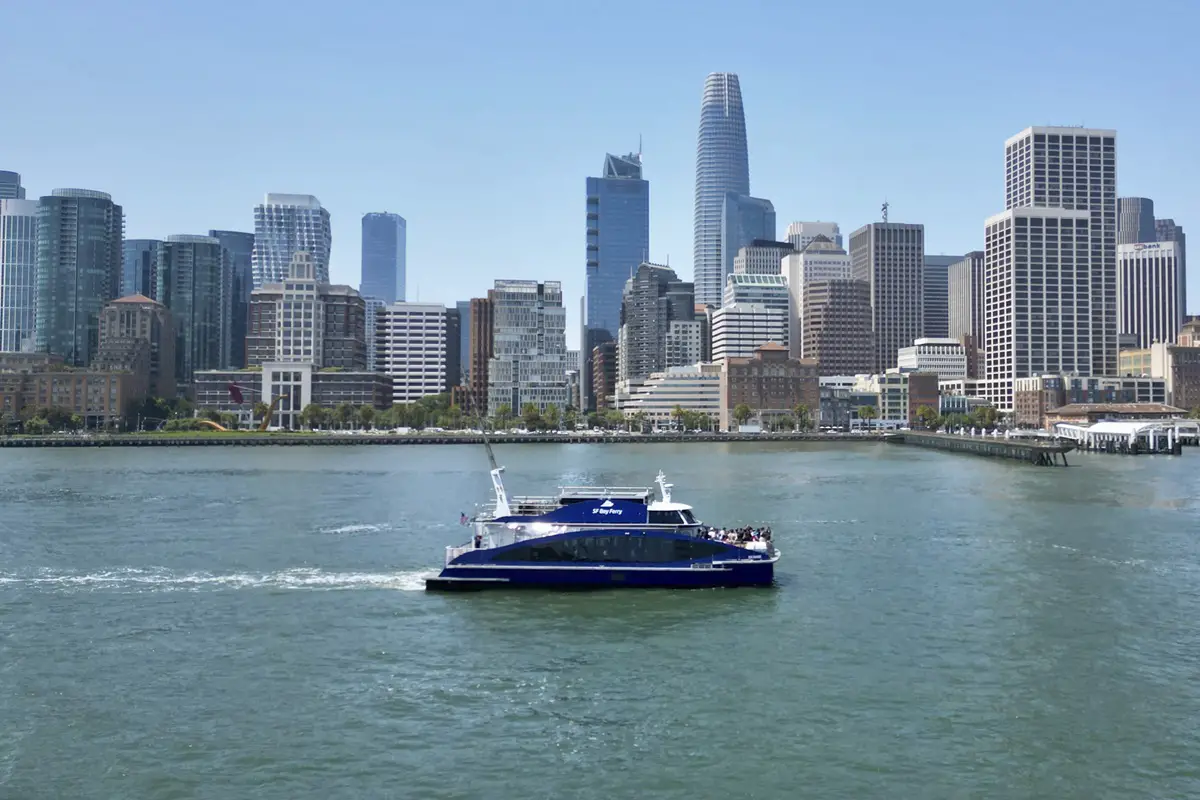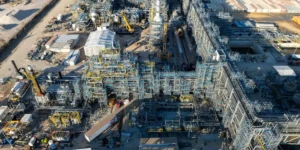First Hydrogen Fuel Powered Ferry In The Word To Provide SF Passengers With Free Rides

The MV Sea Change is the first H2 commercial passenger ferry and operates in San Francisco Bay
The first ever hydrogen fuel powered ferry in the world for commercial passengers is now in the water and ready for operation in San Francisco Bay, with the intention of providing people with clean, free rides.
The vessel is a part of a decarbonization strategy
The MV Sea Change hydrogen fuel powered ferry can transport as many as 75 passengers at a time and travels along San Francisco Bay’s waterfront between the downtown SF ferry terminal and Pier 21. It is a step along the path for phasing out the diesel-powered ferries currently operating in the area, to reduce carbon emissions that contribute to climate change.
The vessel is 70 feet long and is a catamaran that will provide free service to passengers for the first six months of its operation. During that time, it will be a part of a pilot program in order to better understand the way the technology functions in real world use.
The goal is to add more hydrogen fuel powered vessels to the fleet
“The implications for this are huge because this isn’t its last stop,” explained San Francisco Bay Area Water Emergency Transportation Authority Chair Jim Wunderman. “If we can operate this successfully, there are going to be more of these vessels in our fleet and in other folks’ fleets in the United States and we think in the world.”

MV Sea Change -world’s first hydrogen fuel powered ferry – Credit: Terry Chea
The hydrogen fuel powered ferry is able to operate for about 16 hours, traveling around 300 nautical miles, between refueling sessions. It uses H2 fuel cells to generate electricity through the combination of H2 from storage tanks and oxygen from the ambient air. This process creates only water vapor as an emission.
Changing marine transportation with H2
 Commuter ferries are hardly the only type of marine vessel that have been testing H2 and fuel cells in order to help decarbonize their operations. The marine shipping industry – which is responsible for the production of almost 3 percent of all global greenhouse gas emissions – has also been looking into the use of H2 to help decarbonize its highly polluting operations worldwide.
Commuter ferries are hardly the only type of marine vessel that have been testing H2 and fuel cells in order to help decarbonize their operations. The marine shipping industry – which is responsible for the production of almost 3 percent of all global greenhouse gas emissions – has also been looking into the use of H2 to help decarbonize its highly polluting operations worldwide.





